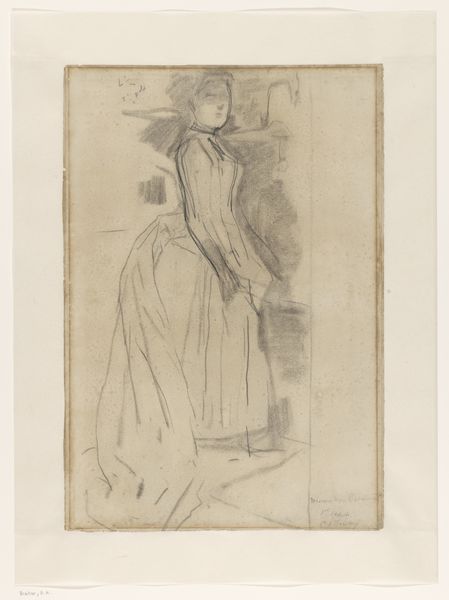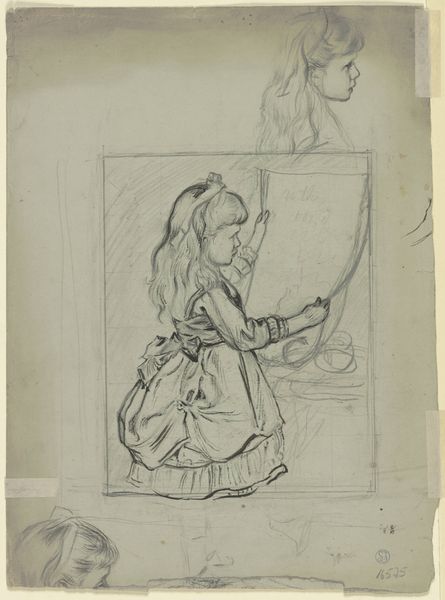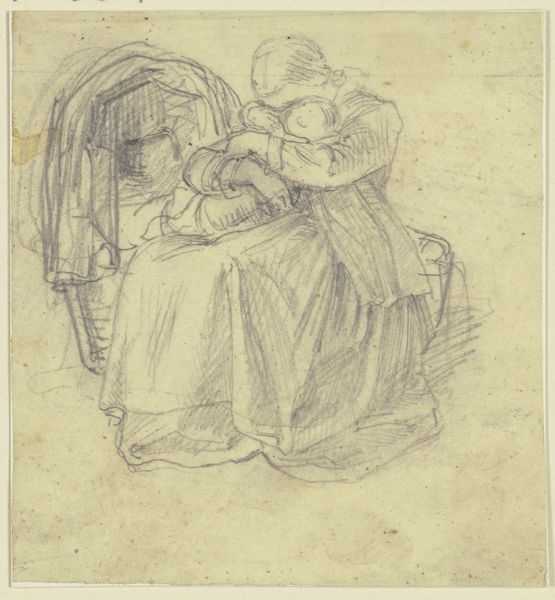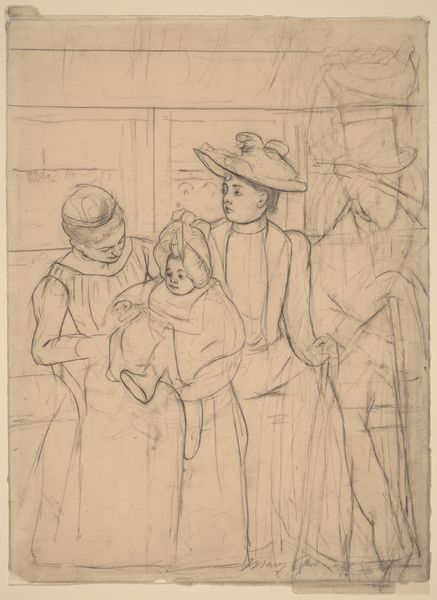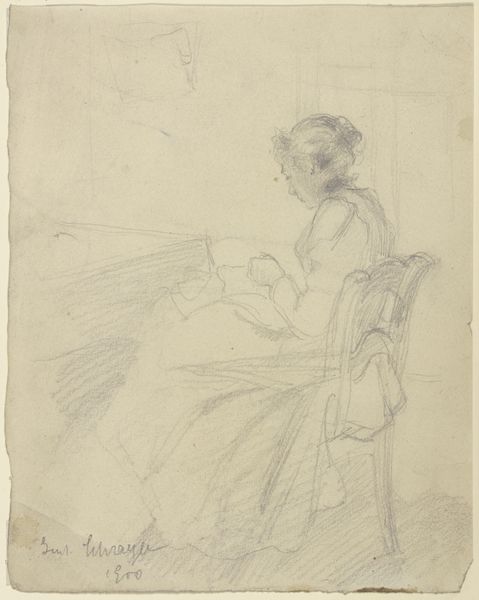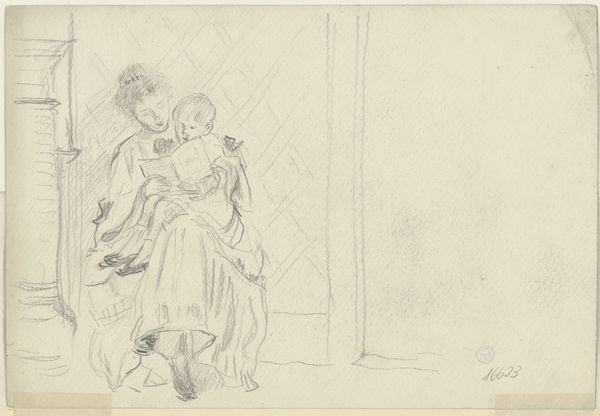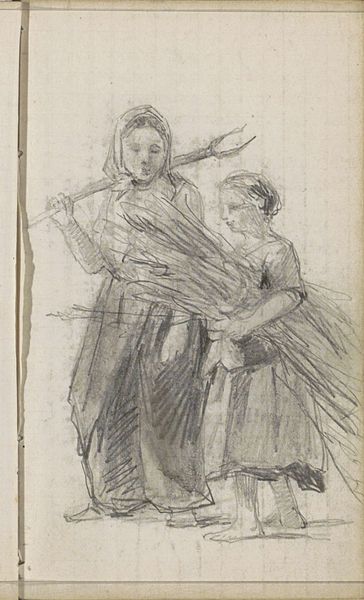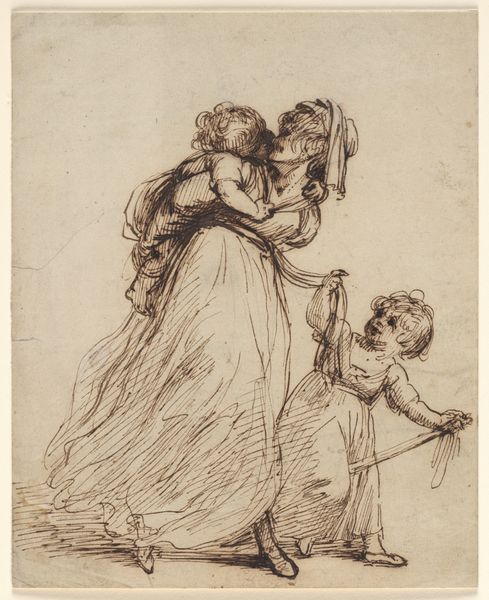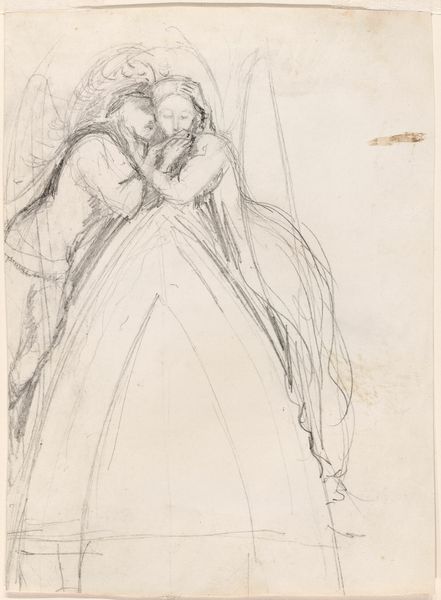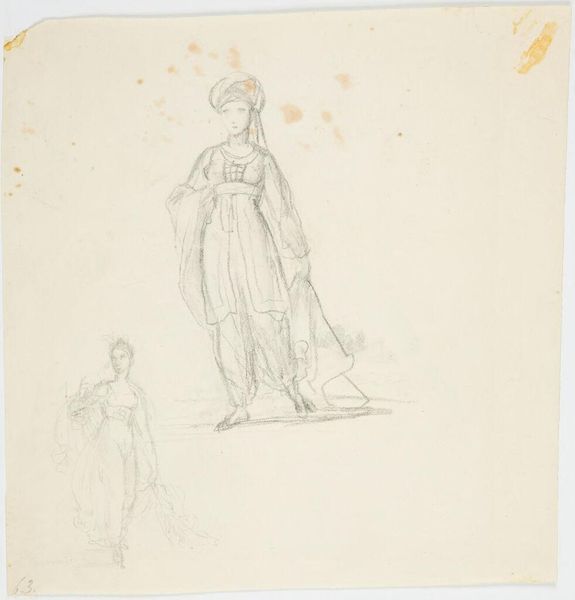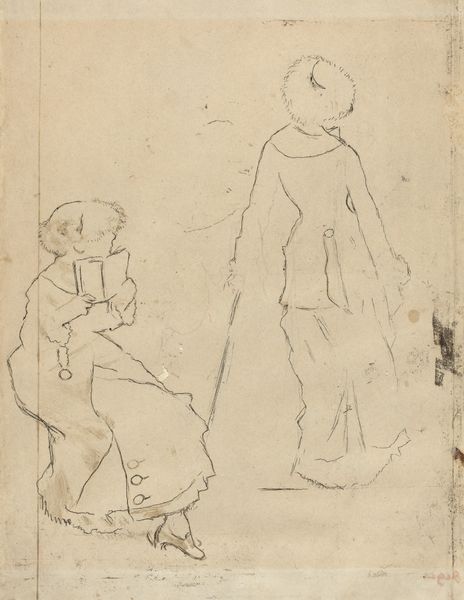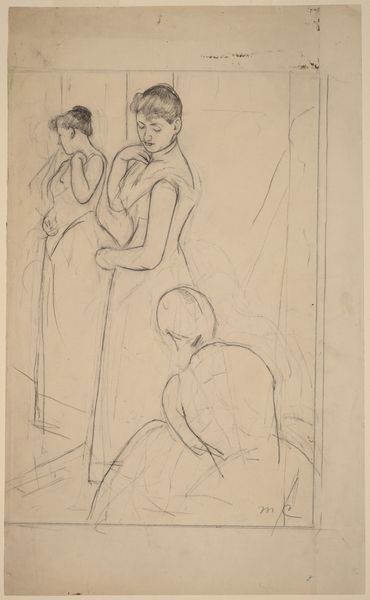![Study for "Mary Cassatt at the Louvre" [recto] by Edgar Degas](/_next/image?url=https%3A%2F%2Fd2w8kbdekdi1gv.cloudfront.net%2FeyJidWNrZXQiOiAiYXJ0ZXJhLWltYWdlcy1idWNrZXQiLCAia2V5IjogImFydHdvcmtzLzgyMDIzYWIxLTA3NTctNDFmZS05MjA4LTlhOTg3MjBmZmRmYi84MjAyM2FiMS0wNzU3LTQxZmUtOTIwOC05YTk4NzIwZmZkZmJfZnVsbC5qcGciLCAiZWRpdHMiOiB7InJlc2l6ZSI6IHsid2lkdGgiOiAxOTIwLCAiaGVpZ2h0IjogMTkyMCwgImZpdCI6ICJpbnNpZGUifX19&w=3840&q=75)
drawing
#
portrait
#
drawing
#
impressionism
Dimensions: overall: 32.3 x 24.5 cm (12 11/16 x 9 5/8 in.)
Copyright: National Gallery of Art: CC0 1.0
Editor: This is Edgar Degas' "Study for 'Mary Cassatt at the Louvre'", created around 1879. It's a drawing, seemingly a preparatory sketch. What strikes me are the geometric shapes overlaid on the figures; it feels very calculated. What do you make of it? Curator: I see a revealing glimpse into the labor of artistic production. Look at those construction lines. They demonstrate the underpinnings, the mechanics of creating an image intended to depict leisure and culture. Degas is showing us, quite literally, the scaffolding of representation. Editor: So, the process itself is part of the statement? Curator: Precisely! We often see Impressionism as capturing fleeting moments, but here we see the deliberate construction required to achieve that effect. What materials did Degas employ to develop this image? Was it readily available or more expensive stock? Editor: It appears to be pencil on paper. Presumably fairly accessible materials even then? Curator: Exactly. The disposability of paper is vital, marking this as a sketch, not a finished product. Moreover, consider the implied labor involved. The paper manufacture, pencil production, and Degas' skilled hand all contribute to this study. It reveals an entire network of production and consumption feeding into artistic creation. And what is the context? This is a drawing for a larger composition of women as consumers and consumers of culture. What do we consume when looking at this image? What is available for consumption, exactly? Editor: I hadn't considered that web of materials and work so explicitly. So, by showing the working process, Degas hints at the material realities that underpin even the most 'effortless' artistic creations? Curator: Absolutely. He exposes the artifice and the labor inherent in producing an image of leisure, forcing us to consider the social and material conditions that make such representations possible. It also shows how class impacts available choices; what locations did middle and upper-class women go to when leisure time allowed it? Editor: It definitely changes my perspective to think of the work not just as a sketch, but as a document of production and material culture. Curator: Indeed. A drawing reveals more than just an image; it reveals a complex interplay of materials, labor, and social context.
Comments
No comments
Be the first to comment and join the conversation on the ultimate creative platform.
